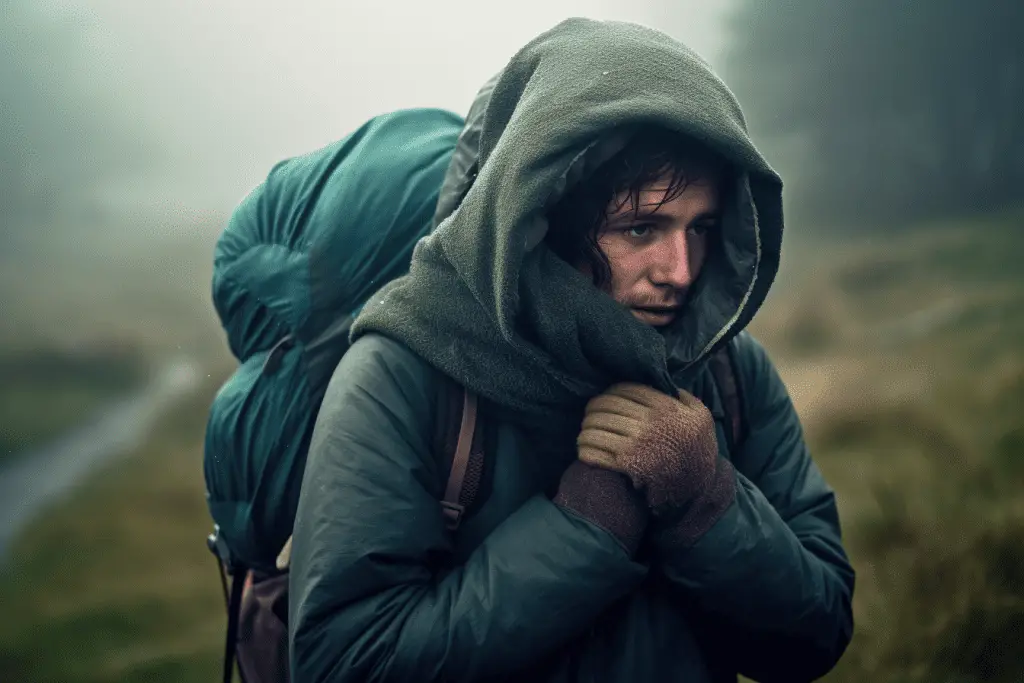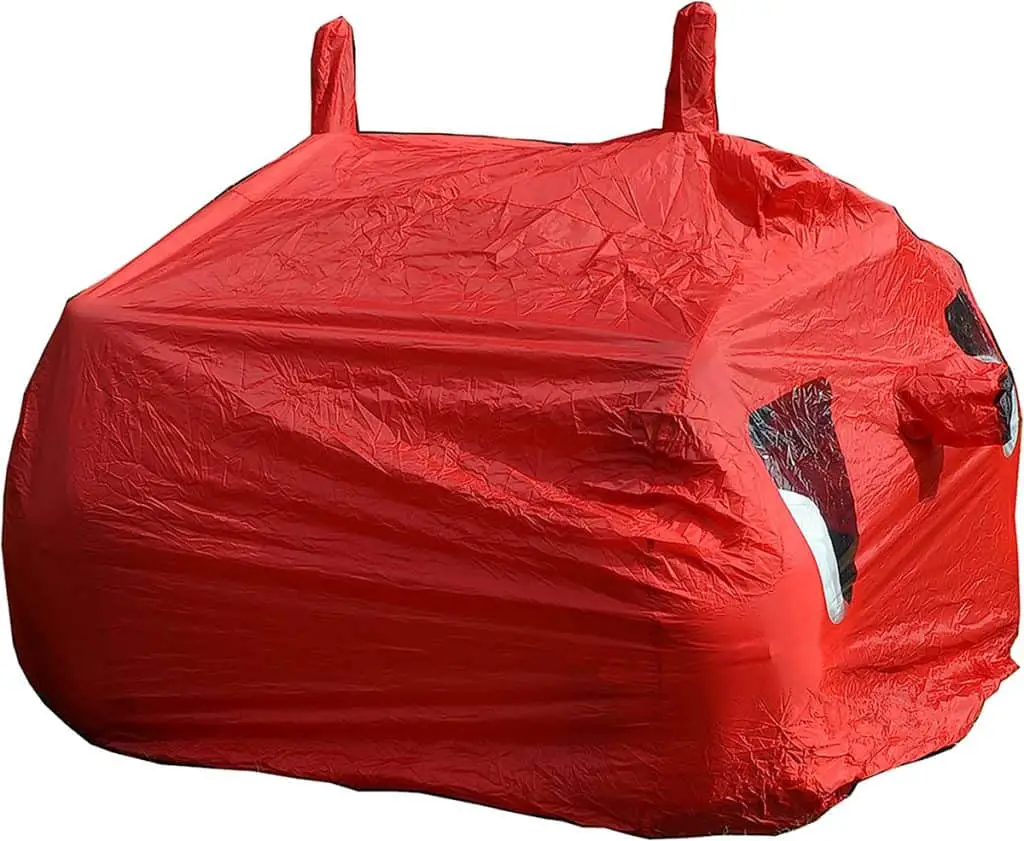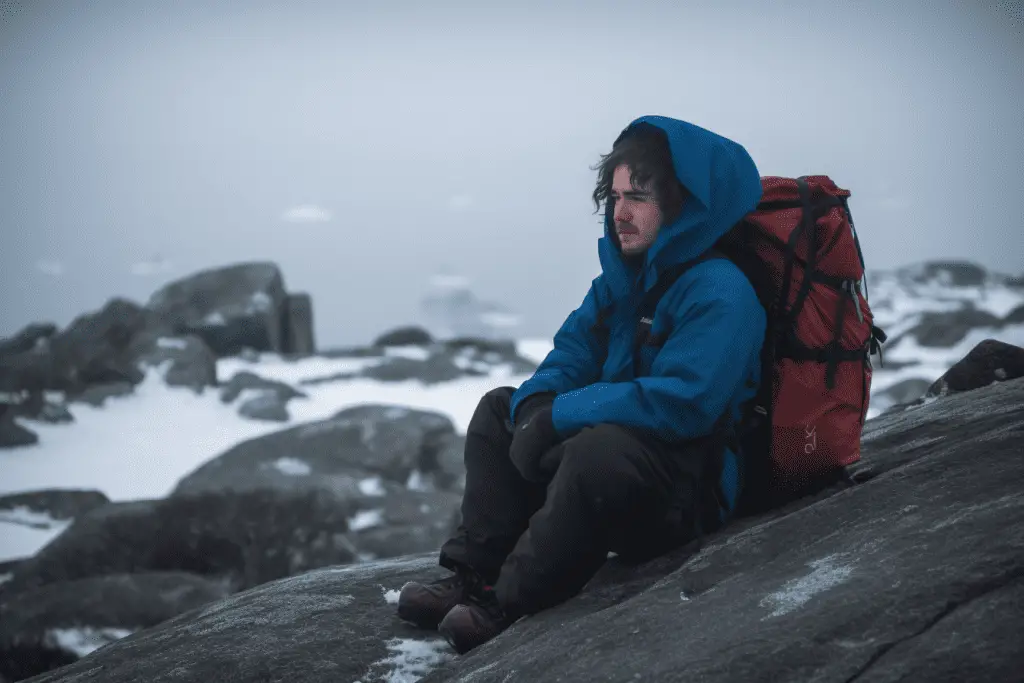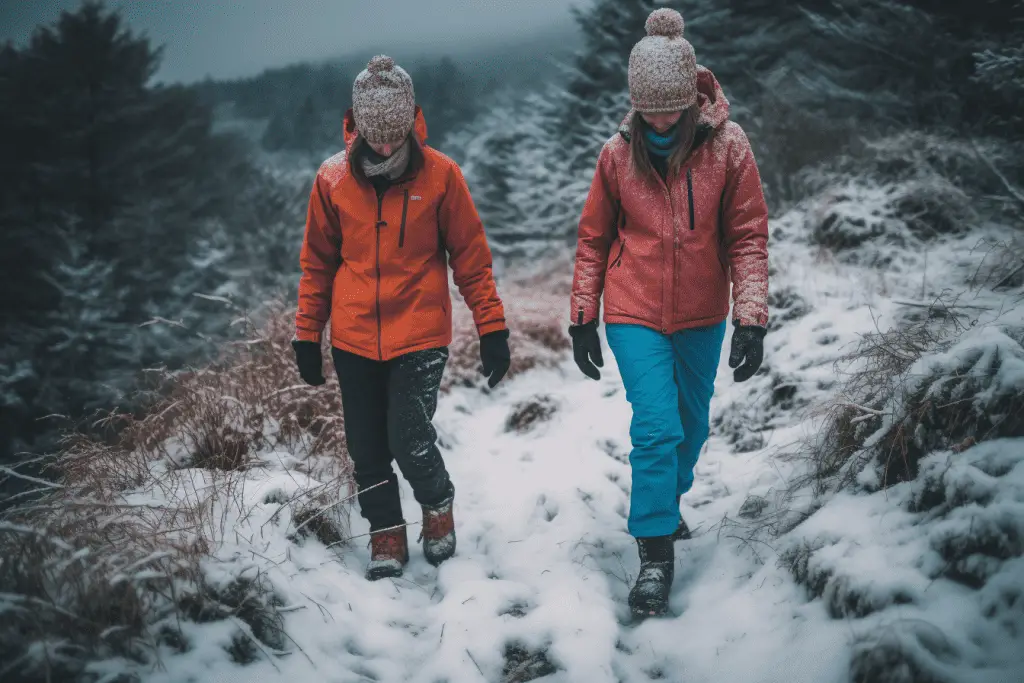Outdoor adventurer’s have many different emergency shelters to choose from, including the bothy bag. But what is a bothy bag?
A bothy bag is a lightweight, waterproof shelter that can be used in emergency situations when hiking or camping. It is essentially a large bag made of durable material that can be easily packed and carried in a backpack. Bothy bags are popular among hikers and mountaineers who may need to take shelter quickly in bad weather or unexpected situations.

Understanding the Concept of a Bothy Bag
Imagine you’re out on an adventurous trek with your friends and suddenly the weather takes a turn, and you need to find shelter, pronto! That’s where a bothy bag comes into play. It’s a lightweight, portable shelter, typically made from waterproof, windproof material that’s designed to protect you and your group from the elements in case of an emergency.
Named after the isolated mountain huts known as ‘bothies’ in Scotland, the bothy bag serves a similar purpose – a haven from the storm, albeit a temporary one. Think of it as an oversize waterproof bag that you can all huddle into. It’s brilliantly simple and yet incredibly effective.
The beauty of a bothy bag is in its simplicity and versatility. You can carry it in your pack without any significant weight or space concerns, yet when unfurled, it offers instant protection from wind, rain, or even snow. It’s not just for emergencies either. A bothy bag can also be a great spot to stop for lunch on a drizzly day or a windbreak when you’re on an exposed ridge. In a nutshell, a bothy bag is your ultimate outdoor companion, ready to provide shelter whenever and wherever you need it.
A Brief History of Bothy Bags
The story of the bothy bag starts in the rugged, rain-soaked landscapes of Scotland. The term ‘bothy’ traditionally refers to basic shelters in remote mountain areas of Scotland, available for anyone to use free of charge. These bothies provided hikers and climbers with a place to rest, refuel, and escape the often harsh Scottish weather.
Inspired by these life-saving structures, the bothy bag was invented as a portable, lightweight shelter for emergencies and brief respites during arduous outdoor activities. Introduced in the 1960s and ’70s, the first bothy bags were essentially large sacks made of durable, waterproof material with enough room for multiple people to sit inside.
Modern Day Bothy Bags
Over time, bothy bags have seen quite a few upgrades. Modern versions are made from high-tech materials that are not just waterproof and windproof, but also breathable, to prevent condensation from building up inside the bag. They come in a variety of sizes to accommodate anywhere from two to twelve people. Some even have clear windows and air vents for improved comfort and usability.
From humble beginnings in the Scottish Highlands, bothy bags have evolved into an essential piece of kit for outdoor enthusiasts worldwide. Whether you’re a seasoned mountaineer or a casual hiker, a bothy bag can provide a vital lifeline when Mother Nature decides to throw a curveball.
Bothy Bag Features
Now, you might be wondering, what sets a bothy bag apart from other outdoor gear? Well, the unique charm of a bothy bag lies in its distinct features.
First off, its size and weight. Bothy bags are incredibly compact and lightweight. They’re designed to fold down small enough to fit in your backpack without being a burden. But don’t let their small size fool you! When unfurled, they can provide shelter for multiple people, depending on the model.

Support this site and get the bothy bag above at https://amzn.to/3pgssn1
Secondly, bothy bags are built for survival. Made from sturdy, weather-resistant material, they provide a quick, reliable refuge from harsh weather conditions. Rain, snow, or wind – a bothy bag can shield you from it all. Some bags even come equipped with reinforced corners and windows for added comfort.
But perhaps the most unique feature of a bothy bag is its simplicity of use. There are no poles to assemble or stakes to drive into the ground. Just take it out of your pack, pull it over your head, and sit down. The warmth of the bodies inside will quickly raise the temperature, providing a cozy respite in the midst of a wild adventure.
How To Use a Bothy Bag
When it comes to outdoor adventures, it’s always best to prepare for the unexpected. And this is where the bothy bag truly shines – as an emergency shelter. Let’s delve into how to use it in such circumstances.
Imagine being caught out in a sudden downpour in the middle of your hike, or when the temperature drops dramatically. You could try to tough it out, but hypothermia is a real danger in such conditions. Instead, whip out your bothy bag. It’s as simple as removing it from your pack, shaking it open, and climbing inside. The bag traps your body heat, providing a warm refuge, even as the storm rages outside.
Bothy bags also come in handy when injuries occur. If a member of your group gets injured, setting up a traditional tent might not be the quickest or most convenient option. The bothy bag can provide immediate shelter, shielding the injured person from weather elements and allowing for a more comfortable wait for help to arrive.

And here’s a little pro tip: bothy bags aren’t just for emergencies. They can be a great way to take a break from the wind or rain during a hike, giving you a chance to catch your breath, have a bite to eat, or check your map in relative comfort.
So, while we all hope we never have to use a bothy bag in a dire situation, having one in your pack can offer peace of mind and a speedy shelter when the unexpected happens. It’s like carrying a pocket-sized hut for emergency shelter – now that’s something you don’t find every day!
What are Bothy Bags Made Out Of?
You’ve probably guessed by now that bothy bags aren’t your average plastic bags. They’re designed to stand up to harsh weather, and the material they’re made from is a big part of that.
Materials
Most bothy bags are crafted from a durable, rip-stop nylon material. This fabric is known for its high strength-to-weight ratio, meaning it’s both lightweight for carrying in your backpack and strong enough to resist tearing and wearing, even in rugged conditions.
The fabric is also coated with a layer of polyurethane or a similar compound to make it fully waterproof. You might be caught in the heaviest of downpours or an unexpected snowstorm, but rest assured, the water isn’t getting through this material.
A key aspect of bothy bags that shouldn’t be overlooked is breathability. Manufacturers often use material that allows water vapor (like your breath) to escape while still keeping the rain and wind out. This is crucial in preventing condensation buildup inside the bag, keeping occupants dry and warm.
Extra Features
Some bothy bags even feature transparent windows made from clear, reinforced plastic. These windows not only allow you to keep an eye on weather conditions outside, but they also let some light in, making your emergency shelter feel a little less claustrophobic.
In essence, a bothy bag is a brilliant combination of lightweight, durable, waterproof, and breathable materials. These elements together create an emergency shelter that is far more than the sum of its parts, offering protection and peace of mind when you’re out braving the great outdoors.
Finding the Perfect Bothy Bag for Your Group
If you think one-size-fits-all applies to bothy bags, think again! Bothy bags come in a variety of sizes, each tailored for different group sizes and situations.
First off, let’s talk about the solo adventurer. If you’re typically hiking or exploring on your own, a 2-person bothy bag might be perfect for you. It offers ample space for you and your gear, and in a pinch, can squeeze in another person for an emergency.
For duos or small groups, a 4-person bothy bag is a popular choice. It’s not too bulky to carry, and it provides enough space for everyone to huddle in together comfortably. Remember, the more bodies inside, the warmer the shelter!

Larger bothy bags, like the 8- or 12-person versions, are ideal for bigger groups or families. They can also be a valuable addition to group trips or guided tours where the responsibility for safety equipment is shared.
In addition to size, you’ll also find variations in features across different models. Some bothy bags have clear windows to keep an eye on the weather outside. Others come with added ventilation features to prevent condensation build-up. Some are even equipped with a cord to keep the bag secure in windy conditions.
When choosing a bothy bag, consider the typical size of your group and what features matter most to you. No matter your choice, having a bothy bag in your pack means carrying an emergency shelter wherever you go – a lightweight safety net that can stand up to the elements when you need it most.
Maintaining and Storing Your Bothy Bag
Just like any other piece of outdoor gear, your bothy bag requires a little care and maintenance to keep it in prime condition. Here’s how to do it right.
One of the most important things to remember is to dry your bothy bag thoroughly after use. Whether it’s been caught in a rainstorm or covered in morning dew, any moisture left on the bag can lead to mildew and shorten the lifespan of the material. When you get home, hang it out to dry in a well-ventilated area, away from direct sunlight which can degrade the fabric.
Next up, cleaning. If your bothy bag gets dirty, gently clean it with a soft cloth and mild soap. Avoid harsh detergents, as these can damage the waterproof coating on the fabric. And remember, never machine-wash your bothy bag – the agitation and heat can cause significant wear and tear.
When it comes to storage, fold your bothy bag loosely rather than stuffing it into a tight ball. This helps prevent creases that could lead to weaknesses in the fabric. Store it in a cool, dry place out of direct sunlight.
Last but not least, periodic checks. Before each trip, inspect your bothy bag for any signs of damage. Check the seams, the fabric integrity, and the overall condition. Small issues can be fixed with a repair kit, but severe damage might mean it’s time for a replacement.
With a bit of TLC, your bothy bag can be a reliable companion for many adventures to come. A well-maintained bothy bag doesn’t just mean a longer lifespan, it also ensures it’s ready to protect you when you need it most.
Bothy Bag Alternatives
While bothy bags are a great piece of gear to have in your backpack, they aren’t the only emergency shelter options available. Depending on your specific needs and preferences, you might find that one of these alternatives suits you better.
Bivy Sacs
One popular alternative is the bivy (bivouac) sack. Essentially, a bivy sack is a waterproof cover for your sleeping bag, providing an added layer of protection against the elements. While they offer less space than a bothy bag, bivy sacks are a great choice if you’re solo camping or if you need shelter for an unexpected overnight stay. They are generally more lightweight and compact than bothy bags, making them easy to carry on long journeys.
Emergency Blankets
Emergency survival blankets, also known as space blankets, are another lightweight, compact, and affordable alternative. These blankets are made from heat-reflective thin plastic sheeting and are designed to reduce heat loss in a person’s body caused by thermal radiation, water evaporation, or convection. While not as robust or reusable as a bothy bag or bivvy sack, they are a valuable addition to any emergency kit due to their small size and weight.
Tarp Shelters
Tarp shelters are a more versatile option, allowing for various setup configurations depending on your needs. A tarp can be pitched to protect against wind, rain, or sun, and can accommodate more people than a bothy bag. However, tarps are generally heavier and require more skill and time to set up.
Emergency Tents
Lastly, portable emergency tents or tube tents are an option. They are lightweight, compact, and relatively easy to set up. While they offer more space and comfort than a bothy bag, they are often less durable and not as well insulated.
In conclusion, while the bothy bag is a fantastic piece of gear for many outdoor adventurers, there are various alternatives available. The right choice depends on your specific needs, the nature of your adventure, and personal preference.
Wrapping Up: The Bothy Bag – Your Compact Lifesaver
The bothy bag truly is an unsung hero of outdoor gear. Lightweight yet resilient, simple yet reliable, it exemplifies how the most uncomplicated solutions can often be the most effective. Whether you’re an avid mountaineer braving unpredictable weather or a casual hiker enjoying a day out in nature, a bothy bag provides an invaluable safety net.
So, when you pack your gear for your next adventure, consider making some room for this portable haven. It won’t take up much space, and you’ll barely notice the weight. But in the face of an unexpected turn of events, this humble piece of fabric could make all the difference. After all, it’s always better to have a bothy bag and not need it, than to need it and not have it.

Thanks for reading!
This article is a gem. I’ve bookmarked it for future reference. Thanks for the valuable insights!